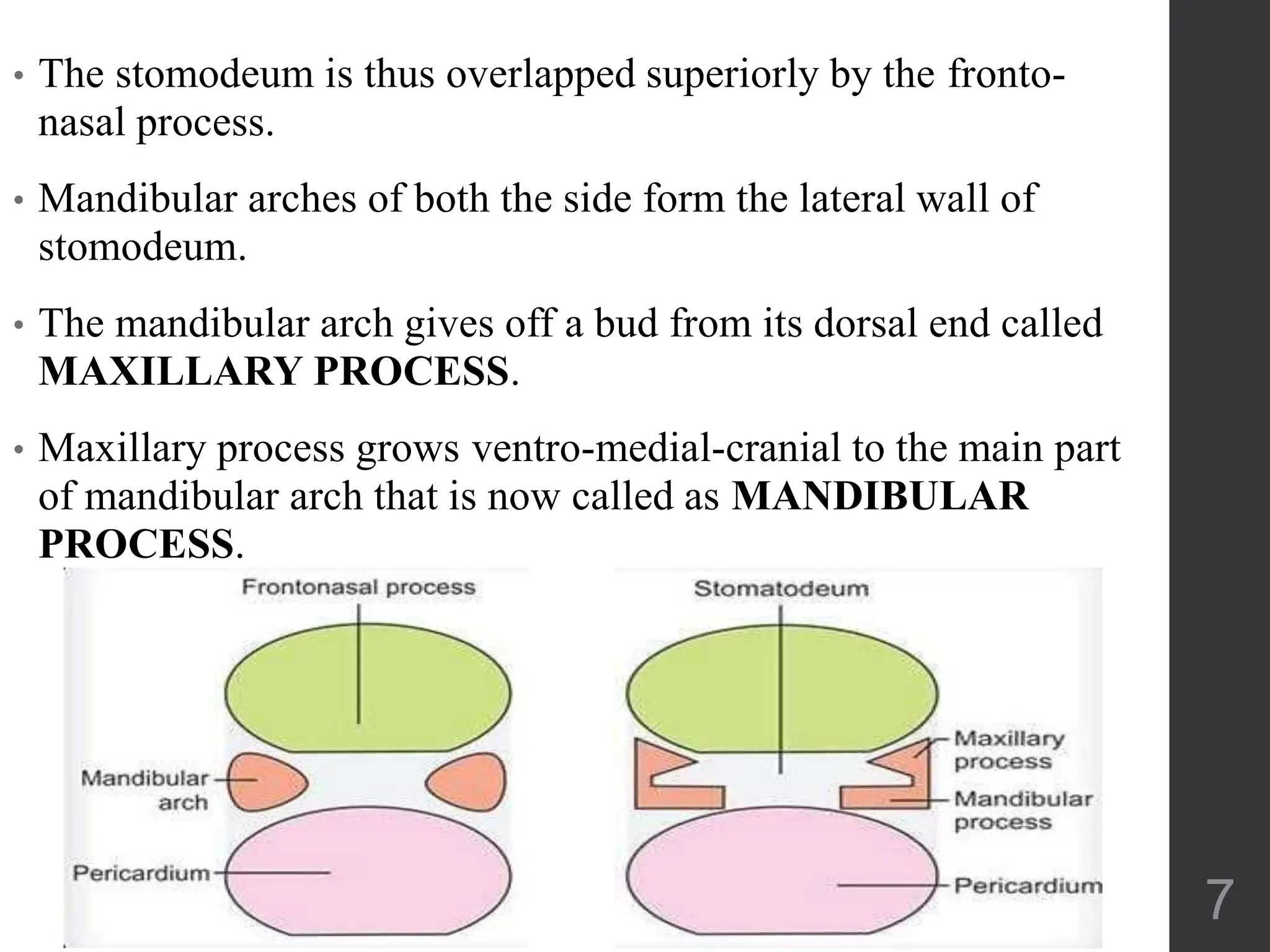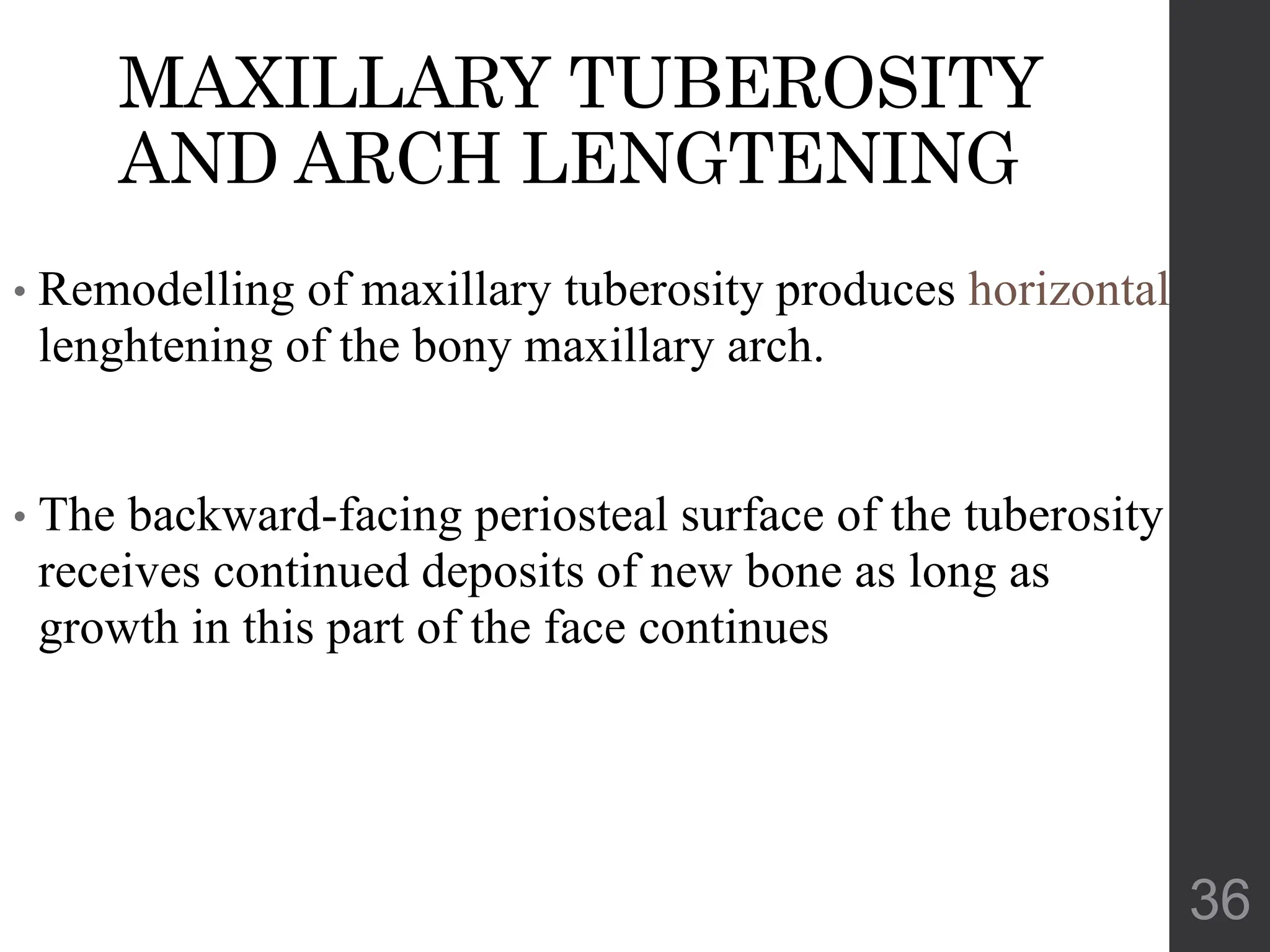The document discusses the embryonic development and anatomy of the maxilla, detailing the processes involved in its growth and the formation of craniofacial structures. It highlights the importance of various embryonic processes, including the role of branchial arches, palatal formation, and remodeling patterns postnatally. Additionally, it addresses developmental anomalies such as cleft lip and palate and their associated syndromes.



























































![60
VARIOUS SYNDROMES ASSOCIATED
WITH [CL(P)]
Stickler syndrome Mutations in the specific
collagen gene palatal clefting
Waarnderburg’s syndrome I Mutation in
homeodomain- containing protein (pa x3)
• Mutation in sonic hedgehog (shh)
Holoprosencephalic disorders
• Characterized by severe midline defect(failure of
nose to develop)](https://image.slidesharecdn.com/developmentofmaxilla24-240422134008-6fd0bd46/75/DEVELOPMENT-OF-MAXILLA-with-prenatal-and-postnatal-development-pptx-60-2048.jpg)









